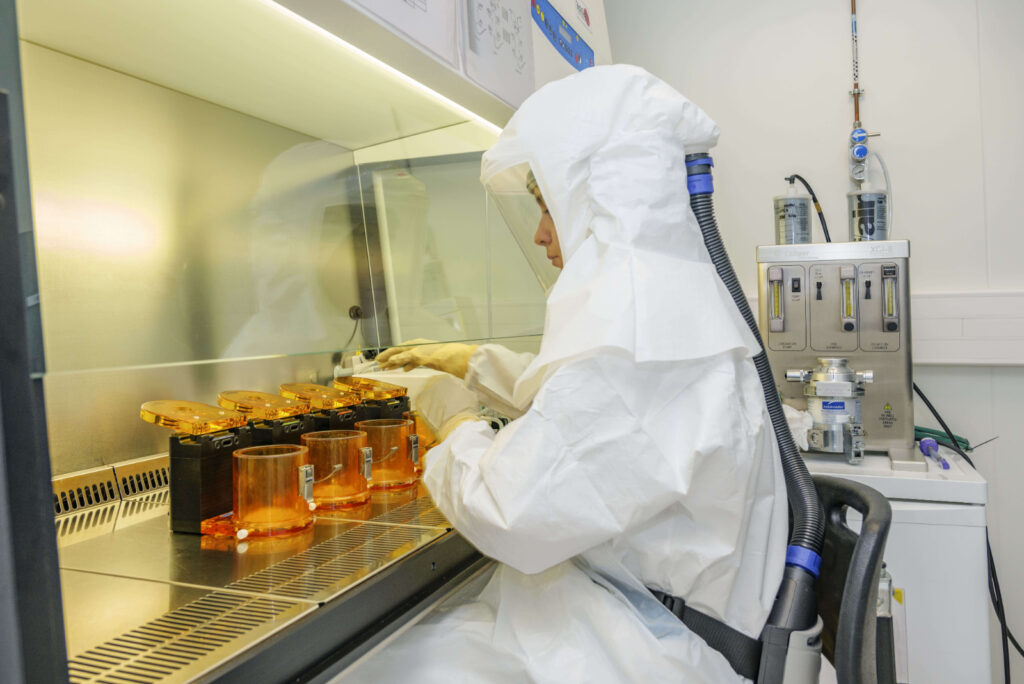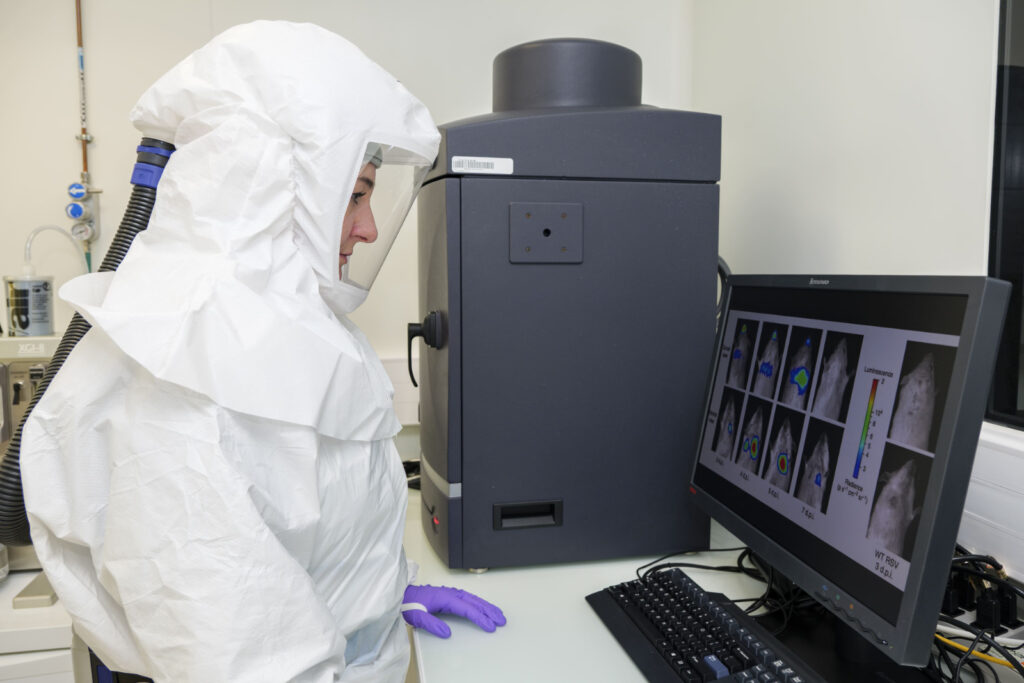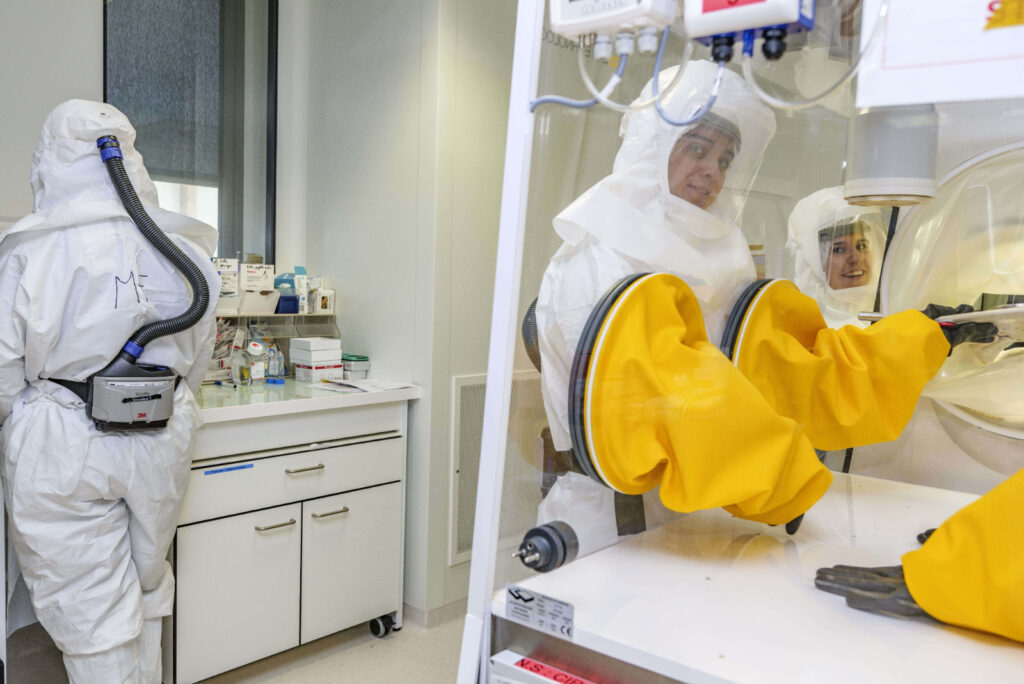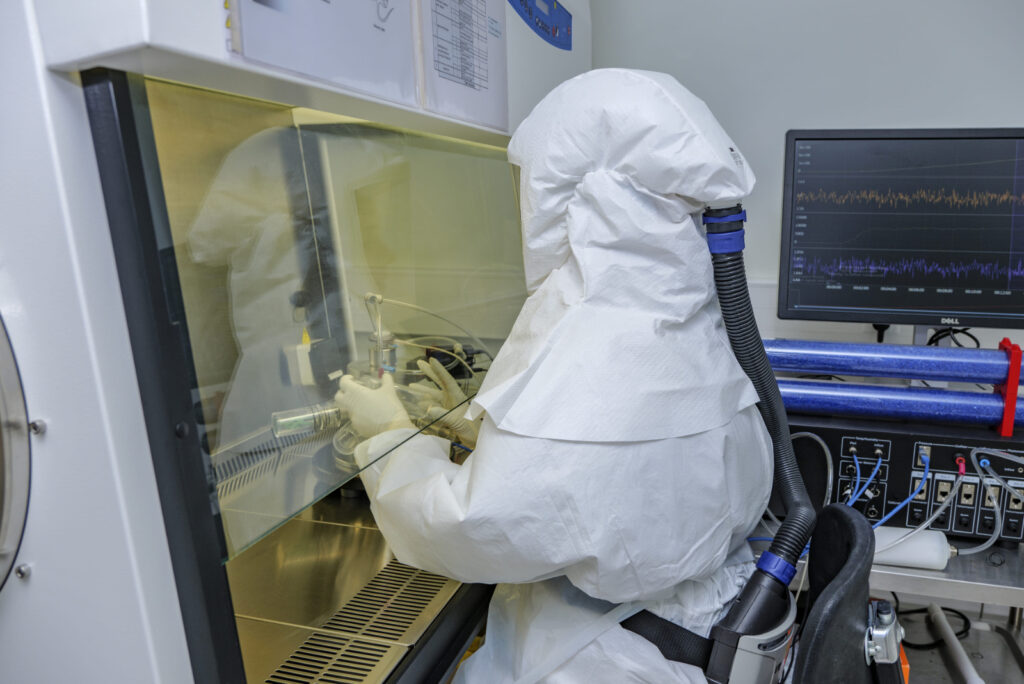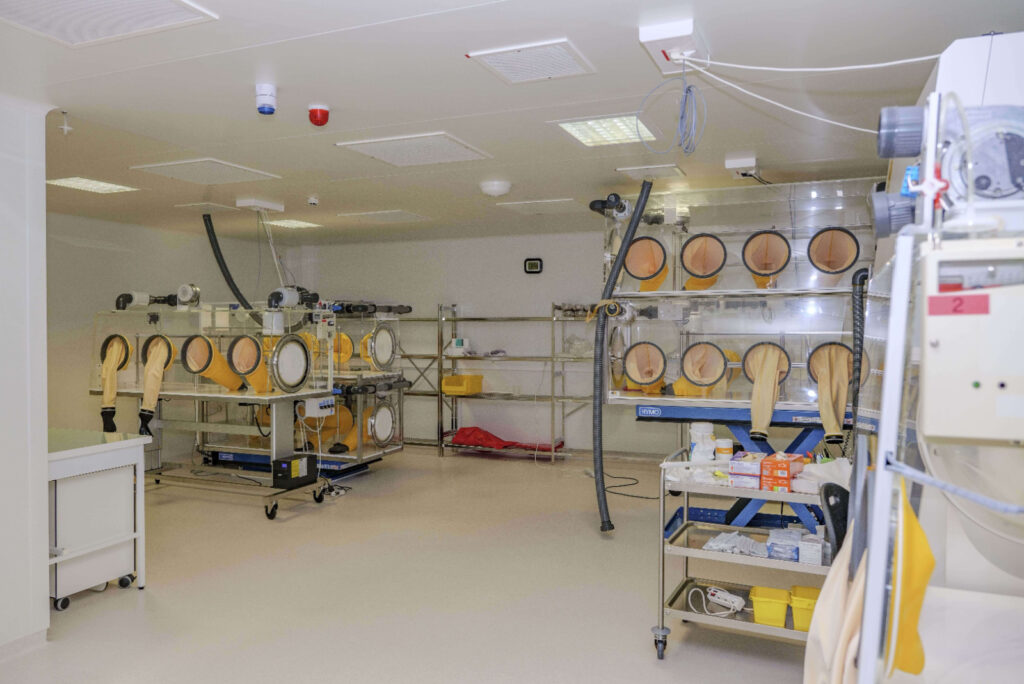-
Mougari S, Favède V, Predella C, et al. Intranasally administrated fusion-inhibitory lipopeptides block SARS-CoV-2 infection in mice and enable long-term protective immunity. Commun Biol. 2025; 8(1):57. DOI: 10.1038/s42003-025-07491-4
-
Acúrcio RC, Kleiner R, Vaskovich-Koubi D, et al. Intranasal Multiepitope PD-L1-siRNA-Based Nanovaccine: The Next-Gen COVID-19 Immunotherapy. Adv Sci (Weinh). 2024; 11(40):e2404159. DOI: 10.1002/advs.202404159
-
Pagneux Q, Garnier N, Fabregue M, et al. Neutralization of SARS-CoV-2 and Intranasal Protection of Mice with a nanoCLAMP Antibody Mimetic. ACS Pharmacol Transl Sci. 2024; 7(3):757-770. DOI: 10.1021/acsptsci.3c00306
Service Description:
The Center of Immunophenomics (CIPHE) provides advanced infrastructure and integrated technologies to support the development of therapies and vaccines targeting infectious and immune-mediated diseases. With ANSM-accredited BSL-2 and BSL-3 animal facilities (400 m²), CIPHE enables secure, compliant research on high-risk viral, bacterial, and emerging pathogens.
The center offers precision in vivo and in vitro disease models – including conventional and genetically engineered rodents, lung organoids, and aerosol infection systems – designed to study respiratory viruses (e.g., Coronaviruses, Influenza, RSV, rhinovirus, metapneumoviruses) and arboviruses (e.g., Zika, Dengue, Chikungunya), in collaboration with partners VirPath and CEMIPAI in the frame of Virocrib – French national infrastructure for antiviral screening.
CIPHE supports projects from early discovery to preclinical validation, offering full experimental design, model development, and regulatory expertise (biosafety, biosecurity, GMO, DUO). The center is engaged in an ISO 9001 quality management system approach to ensure high standards and continuous improvement. It also adheres to the 3Rs principles and animal welfare and care guidelines in all preclinical studies. The platform delivers multi-parametric readouts, including virologic and immunological profiling (flow, spectral, mass cytometry), pulmonary and behavioural function, lung and CNS histopathology, multi-omics (e.g., scRNA-seq, CITE-seq), metabolic markers, and advanced imaging.
Outcomes include validated disease models, mechanistic insights, therapeutic and vaccine efficacy data, and robust, publication-ready datasets. CIPHE is a key contributor to research infrastructures such as PHENOMIN, CELPHEDIA, VIROCRIB, INFRAFRONTIER, positioning it as a trusted partner in translational infectious disease research.
